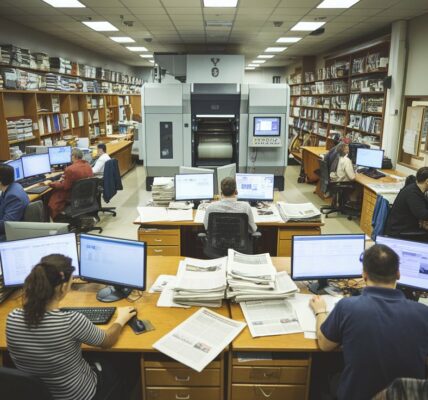Luxurious Seats Cause Aircraft Imbalance
The allure of flying first class often comes with luxurious perks, but for Swiss International Air Lines, these perks are creating a hefty challenge. The airline is being forced to make significant adjustments to some of its aircraft because the new first-class seats, set to debut in 2025-2026, are proving to be too heavy. This unexpected issue is causing an imbalance in the plane’s center of gravity, which has significant implications for flight safety and performance.
Swiss, the flag carrier of Switzerland, is planning to install these new “Swiss Senses” seats on its Airbus A330s. These seats, designed to offer unparalleled privacy with six-foot walls and locking doors, are positioned at the front of the aircraft. However, their substantial weight has made the plane nose-heavy, necessitating the installation of a large “balancing plate” at the rear of the aircraft to restore balance.
The “Swiss Senses” Experience: A First-Class Upgrade
The new Swiss Senses seats are part of a broader trend in the airline industry, where first and business class seats are becoming increasingly luxurious and therefore heavier. These seats are not just about comfort but also about providing an exclusive, private flying experience. The Swiss Senses seats are designed to give passengers a sense of personal space and privacy, with sliding doors and high walls that create a suite-like environment.
This trend towards heavier seating in premium classes contrasts sharply with the opposite trend in economy class, where airlines are striving to make seats lighter and more efficient. The result of these diverging trends is a shift in the aircraft’s center of gravity, particularly on models like the A330, which already tend to be nose-heavy. This issue is further compounded by the fact that the first-class cabin is located at the front of the plane.
Balancing Act: The Need for a Counterweight
To address the imbalance on the A330s, Swiss will install a balancing plate at the back of the plane. This plate, which will be positioned in a way that passengers won’t notice, is necessary to counterbalance the heavy first-class seats at the front. The exact weight of this plate will be determined after the final weight of the new cabin interiors is established. The balancing plate is not a permanent solution, but it will remain on these aircraft until a more sophisticated and long-term solution is developed.
The installation of a balancing plate is not a common practice in the airline industry and highlights the unique challenges Swiss faces with its A330 fleet. The plate is a temporary fix, but it underscores the importance of weight distribution in aircraft design. Even small shifts in weight can have significant effects on an aircraft’s performance, fuel efficiency, and safety.
Customer Demand Drives First-Class Revamp
The decision to revamp the first-class cabin was not made lightly. It was driven largely by customer demand. Passengers have been increasingly vocal in their requests for a modernized first-class experience, especially on the Airbus A330-300s, which serve key routes between Switzerland, the Middle East, and North America. Swiss, known for its first-class cabin on all long-haul flights, has built a reputation for luxury and comfort, earning it the title of Best European Airline First Class in the 2024 World Travel Awards.
Customers had made it clear that the current first-class offering was in need of an update. In response, Swiss developed the Swiss Senses concept, promising a full “made-in-Switzerland” experience. This includes spacious suites that offer up to 37 square feet of personal space, complete with sliding doors and walls to shield passengers from their fellow travelers. The aim is to provide a level of comfort and privacy that meets the expectations of the most discerning flyers.
Design Challenges and Weight Considerations
In an effort to minimize the impact of the new, heavier seats, Swiss has made several strategic design decisions. One of these decisions was to reduce the number of first-class seats from eight to four, thus limiting the additional weight at the front of the aircraft. Additionally, unlike other airlines that have introduced sliding doors in business class, Swiss opted not to include this feature, further reducing potential weight increases.
Swiss also considered adding more economy seats at the back of the plane to balance the weight. However, this idea was ultimately rejected in favor of preserving passenger comfort in the economy section. Adding more seats would have reduced legroom and overall comfort, which Swiss determined was not an acceptable trade-off.
Despite these efforts, the weight of the new first-class seats remains a challenge. The current first-class seats on Swiss weigh 205 kilograms or 452 pounds each. However, the final weight of the new seats will not be known until they are fully installed and tested. This uncertainty makes it difficult to plan the exact countermeasures needed to maintain the plane’s balance.
Addressing the Industry-Wide Trend
The challenge Swiss faces with its A330s is not unique. Across the airline industry, there is a growing trend of adding more luxurious, and therefore heavier, seats in premium cabins. This trend is being driven by customer demand for more privacy and comfort, especially on long-haul flights. However, it poses significant challenges for aircraft design, particularly in terms of weight distribution and fuel efficiency.
Swiss has acknowledged that the weight of the seats grew as the manufacturing process progressed. Initially, the airline used rough estimates of weight during the planning stages. As production moved forward, these estimates increased, leading to the current situation where the final weight will only be confirmed once the seats are installed.
The airline has denied that the weight issue was a planning error, emphasizing that such challenges are a normal part of the design and manufacturing process. Swiss is confident that the balancing plate will effectively address the issue, although it continues to explore more advanced solutions for the future.
The Environmental Impact of First-Class Flying
Flying first class is not just a luxury—it’s also the most environmentally damaging way to fly commercial. The heavier seats and maximized space mean that first-class cabins are far less efficient than economy class in terms of fuel consumption per passenger. This inefficiency contributes to higher carbon emissions, which is a growing concern in an industry under increasing pressure to reduce its environmental impact.
The new first-class seats, while offering unparalleled comfort, add to the aircraft’s overall weight, further exacerbating these environmental concerns. As airlines continue to balance customer demands for luxury with the need for efficiency, the environmental impact of premium cabins will remain a critical issue.
Looking Ahead: The Future of First-Class Flying
Despite the challenges, Swiss remains committed to delivering a top-tier first-class experience. The introduction of the Swiss Senses seats is part of a broader effort to stay competitive in a rapidly evolving industry. As other airlines introduce their own luxury offerings, Swiss is determined to maintain its reputation for excellence.
Swiss’s partner airline, Lufthansa, has also committed to the new seats for its revamped “Allegris” cabins. However, Lufthansa won’t be retrofitting any A330s, which means it will avoid the balancing issues Swiss faces. This decision underscores the importance of aircraft type and configuration in managing the challenges associated with heavier seats.
As Swiss prepares to debut its new first-class seats in the winter of 2025-2026, the airline continues to explore new technologies and design solutions that could replace the temporary balancing plate. The ultimate goal is to offer a first-class experience that meets the highest standards of luxury without compromising the safety, efficiency, and environmental sustainability of its flights.
In the meantime, passengers can look forward to enjoying the new Swiss Senses seats, knowing that behind the scenes, Swiss is working tirelessly to ensure a smooth and balanced flight experience. The challenges of modern aircraft design are complex, but they are also a testament to the airline’s commitment to innovation and customer satisfaction.





